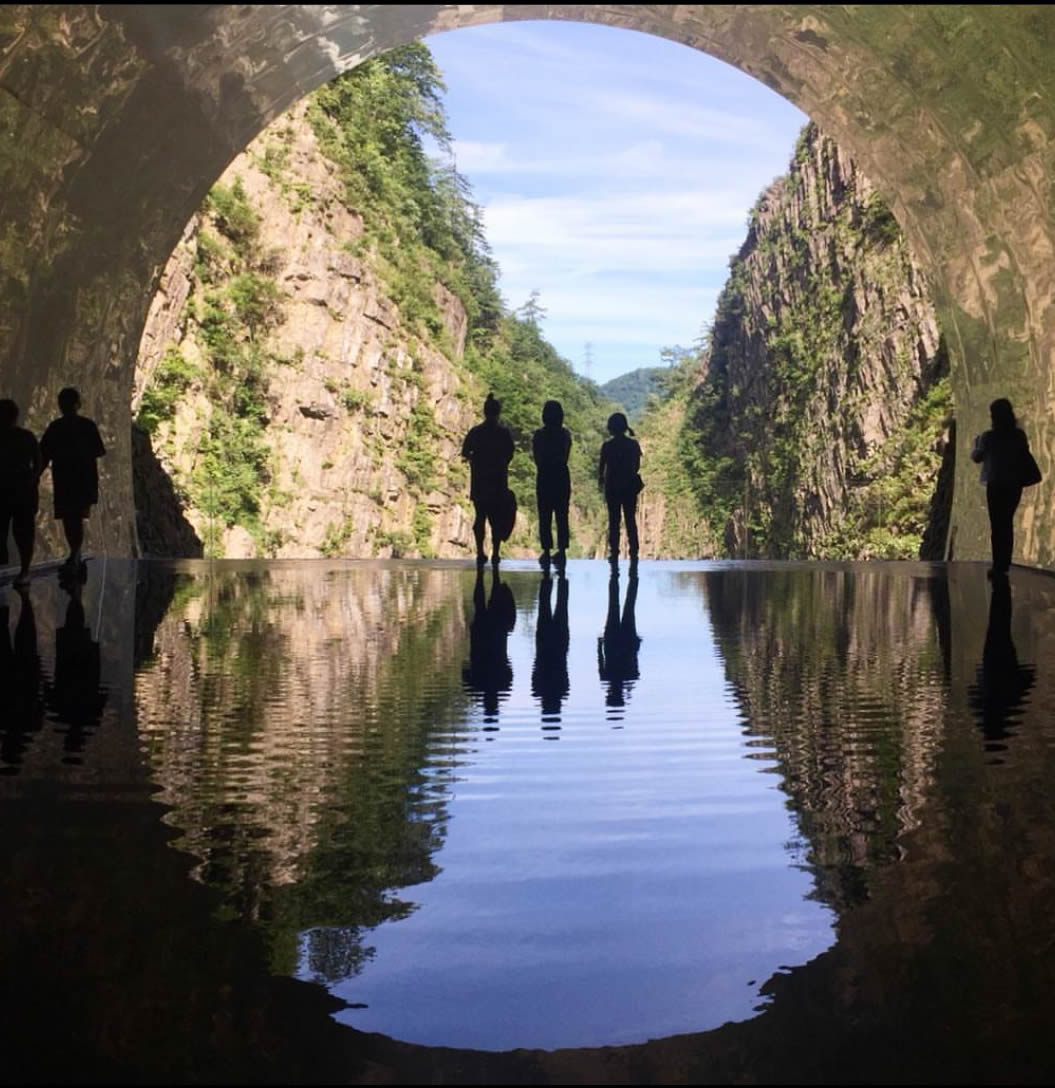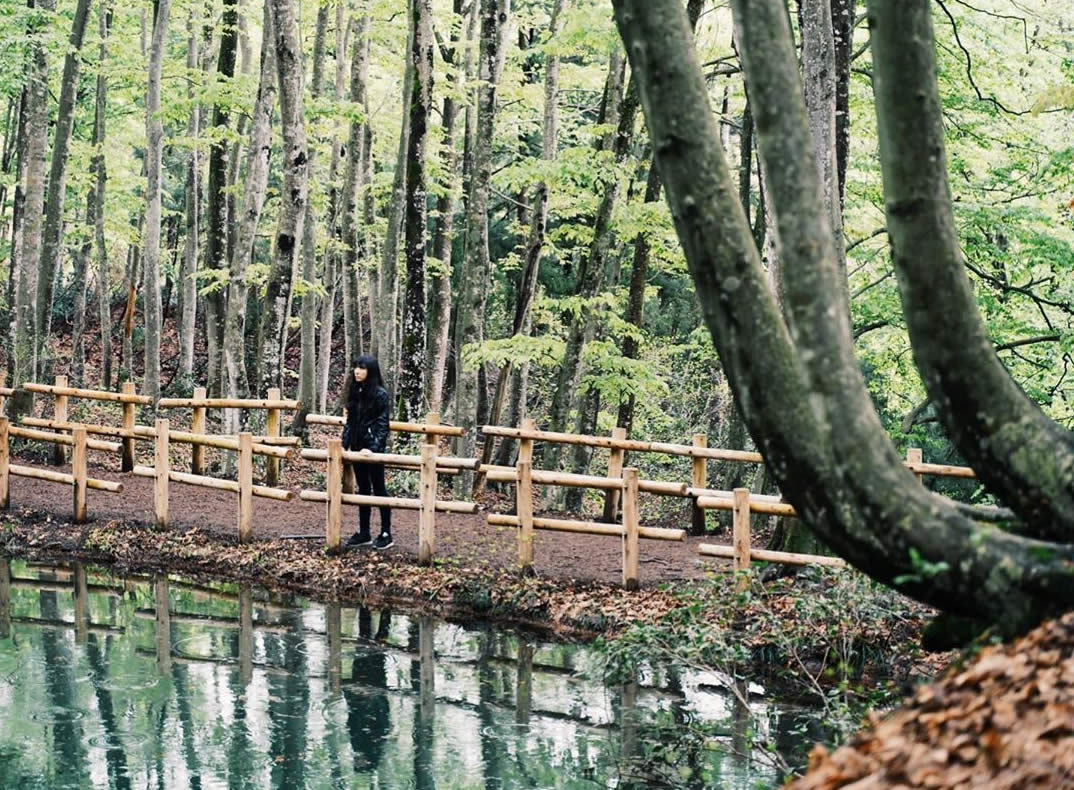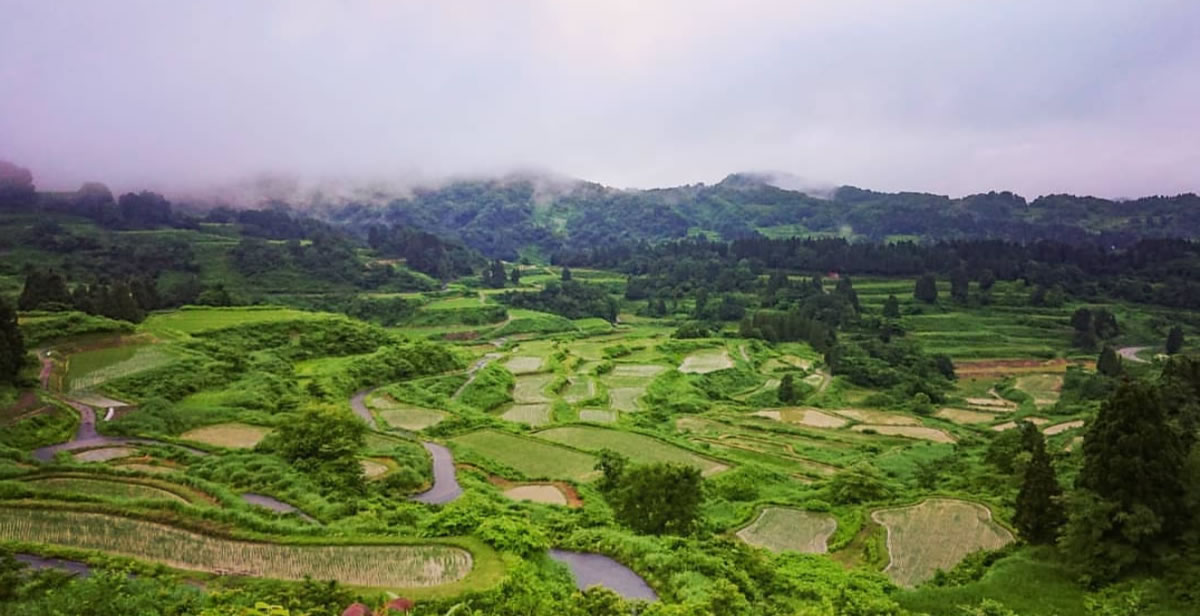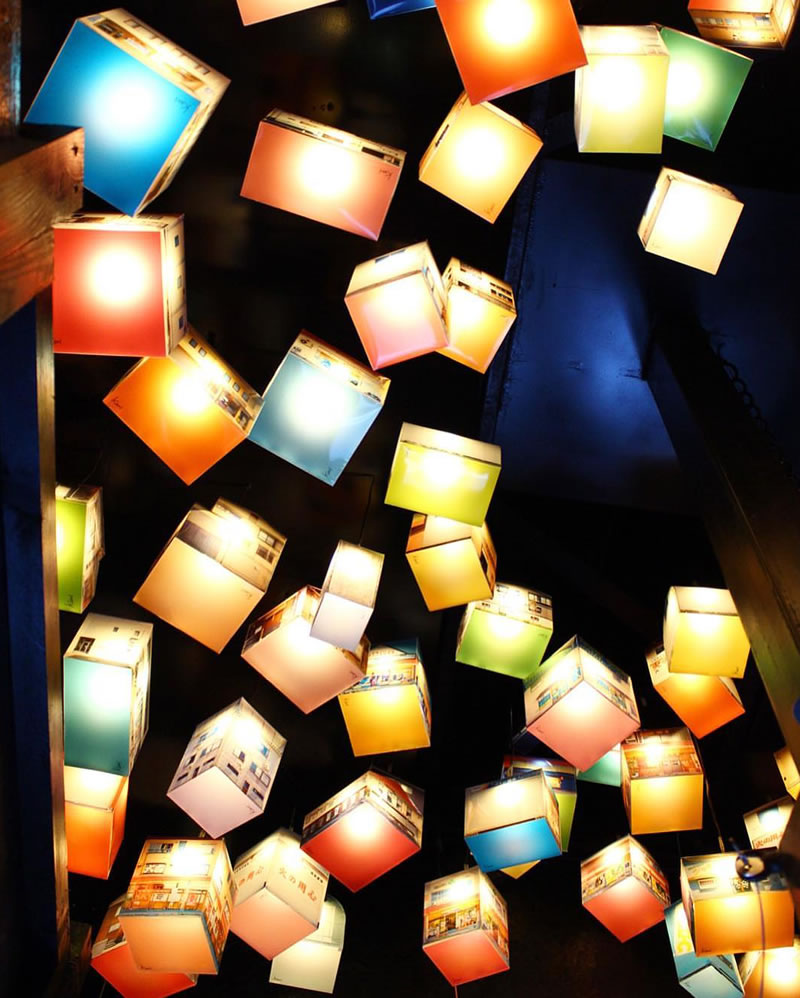Located in south Niigata, this rural part of Japan sits above Yuzawa and the northern border of Nagano. Whilst this area is renowned for its heavy snowfall, the Echigo Tsumari region is packed with things to do all year round. Its verdant beauty and deep cultural roots are celebrated with each season.
Contents
We’ve handpicked the most spectacular views and traditional activities to fine tune your visit. Why not upgrade your itinerary with our list of top things to do.
Kiyotsu Gorge
This majestic wonder is one of Japan’s three most iconic gorges. 12.5km of columnar joint rock formations are the result of an underwater volcanic eruption that occurred millions of years ago. These towering pillars overlook the Kiyotsu river that runs into the larger Shinano river.

A 750-meter tunnel takes visitors through the gorge itself. There are three look out points, each offering a uniquely distinct photo opportunity. Due to the flat terrain, the walk is appropriate for all ages, and is wheelchair and stroller friendly. A round trip walk should take up to an hour, however, the exhibition spaces inside the tunnel will extend your journey somewhat.
Inspired by the five elements, Chinese architect, Ma Yansong and MAD architects reinvigorated the tunnel space in 2018. The result is a sensory journey through colorfully lit passages, ambient music and intricate mirror work. Educational displays and videos are also dotted through the tunnel to explain natural phenomena of the gorge’s appearance.
The final and most spectacular view is the Tunnel of Light; a mirror lined opening to a panoramic view of the V shaped gorge and river. The view changes seasonally, from vibrant greens in spring and summer, to fiery red, gold and orange in the fall. Whilst the gorge is closed from mid-December to late April, you may be able to catch a snowy view in late November and early December.
A café and hot foot bath can be found by entrance. Entry costs 600 yen for adults and 300 yen for children. Visitors under 5, or with a physical disability get free entry.
The tunnel is open from 08:30am-16:30pm The fastest way to access the gorge is by car, as the entrance is closest to the parking lot. By train, the most convenient route is from Echigo Yuzawa station. The bus to Morimiyanohara will stop at Kiyotsukyou-Iriguchi, a 30-minute journey. From the bus stop, the tunnel entrance is another 30-minute walk.
Bijinbayashi
Bijinbayashi, literally translated as “forest of beauties”, houses only one species of tree: the beech tree. Their slender trunks have a graceful, fluid shape, producing an almost hypnotic swaying effect. Standing over 35 meters tall, these 90-year-old trees are a protected habitat for wild birds native to the area. You may spot an Oriental Dollar bird or Ruddy Kingfisher on your walk.

Like many of Japan’s natural wonders, the environment transforms with each season. Visitors flock to the forest in the summer, where the temperature remains two degrees lower than the surrounding areas.
Shinrinyoku, or forest bathing, is a popular form of stress relief that draws people to Bijinbayashi. Soak in the golden light filtering through the summer greenery; immerse yourself in the warm autumnal palette of falling leaves. Winter offers the most striking views as the snow blankets the ground and sits like tinsel over the branches.
Entry to the forest is free, as it is maintained by volunteer groups. The closest train station is Mastudai station. From there, a bus to the Mastunoyama onsen will take you to the Sakaematsu bus stop. Alight here and it’s a twenty-minute walk to the forest. By car, exit at the Shiozawa Interchange if coming from Tokyo, or the Echigo Kawaguchi Interchange from Niigata. If you are using a GPS, use the Kyororo (Museum of Natural Science) phone number to direct you.
Aoyagi Kimono Factory
This recently opened establishment create ready to wear kimono from scratch. Guided factory tours offer visitors a glimpse of the extensive nature of kimono production. From an initial design, to the dyeing process and final embellishments; every step incorporates techniques that have evolved over the centuries.
The factory also has a museum with photographs and items dating back to its opening in 1938. The exhibitions tell a fascinating story about Tokamachi’s textile history, and the life of its founder, Taiki Aoyagi.
Visitors can also get involved in creating their own piece of dyed or stenciled fabric. Choose from either Shibori dyeing, Suri-yuzen screen painting, or Yuzen hand painting. The finished product will then be posted to your address.
Entrance to the factory is set in courses. The Yuzen and Shibori course both involve a 60-minute tour at 2500 yen, but they focus on different dyeing techniques. The Full course takes 90 minutes at 3000 yen, combining both courses together. Visitors can choose to add on a make-your-own experience; however, the prices differ depending on what you make.
The factory is a 500-meter walk from Tokamachi station. From Echigo Yuzawa station, a JR train will take a little over half an hour.
Hoshitoge Rice Terraces
A must-try food in Niigata is Uonuma Koshihikari rice, known for its plumpness and excellent flavor. This slice of rural Japan contains over 200 rice paddies sprawled over sloping hills. Though the property is privately owned by local farmers, a nearby parking lot will lead you to viewing points around the perimeter.

The viewing points are open to the public all year round. The best time to visit is sunrise, when the swirling fog catches the rays of light, and the pools of water reflect the sky. Daytime between late spring and early winter also provide the most beguiling views. NHK fans may be interested to know that the rice terraces were featured in the opening of the 2009 period drama, “Tenjin”.
For a piece of quintessential country scenery, this is a great pit stop to kick start your sightseeing. A visit to the Hoshitoge Rice Terraces shouldn’t last more than 45 minutes, including time for photographs. The most convenient way to access the viewing points is by car. Taxis are available from stations around the Echigo Tsumari area, however the closest one is Matsushiro station.
Seasonal Festivals
Tokamachi Snow Festival
This winter matsuri prides itself on being “the first ever contemporary snow festival”. Similar to those in Hokkaido and Nagano, artists and volunteers carve intricate sculptures out of snow for public display. There are games, performances and delicious local food and drinks to sample. The piece-de-resistance is the grand snow stage where the snow carnival takes place, followed by an impressive fireworks display.
The Echigo Tsumari Art Field and Triennale
Once every three years, cities within the Echigo Tsumari area host an international arts festival with sculptures and exhibitions dotted across the city. Up to 200 pieces are displayed over the city’s 760 square kilometer area; some of the installations have remained on as permanent fixtures.

Many of the pieces are set in abandoned buildings, keeping them alive and useful for years to come. A notable example is the Museum of Picture Book Art, set in an old elementary school.
A full list of the artwork is released online, along with itineraries for families and one day trips. The organizers also run a stamp rally with a specific route. Visitors can pick up special stamps to use on a check list of displays through the city.
Getting to Echigo Tsumari
From Osaka, a one-way train journey to Tokamachi will take around five hours, and around six hours to Matsudai. To get to Matsunoyama, the most convenient method would be via taxi from Tokamachi, or to drive from Osaka which would take between 6 – 8 hours.
From Tokyo the journey to Tokamachi should take between two and three hours, depending on train timetables. It is a great location for remote workers or digital nomads if you like nature while having easy access to the capital city. The cheapest method would be to drive, however from Osaka the journey is extended up to 6 hours. To get to Matsudai or Kawanishi, the train journey time is increased to almost four hours.
Many of Echigo Tsumari’s attractions aim to enhance our bond with nature. The affinity between art and our environment can be seen in its transforming landscapes. Step into snow country and take in the captivating beauty of this enchanting region.